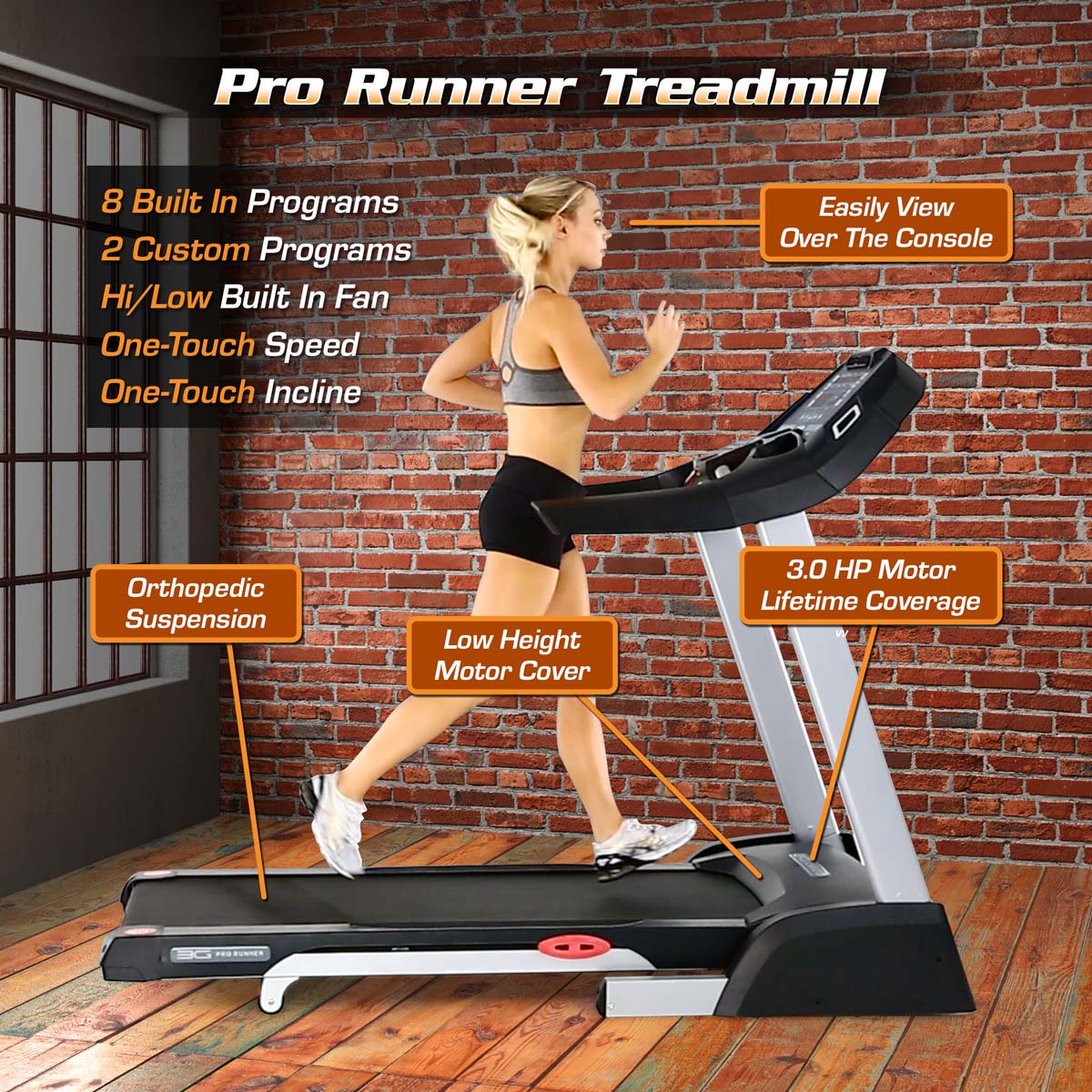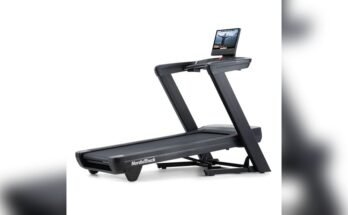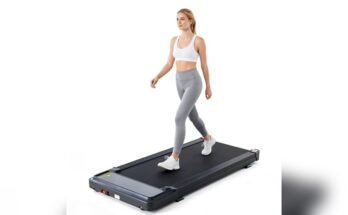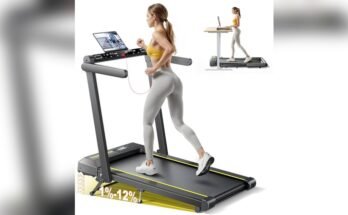A treadmill for home use should typically have 1.5 to 2.5 HP, while commercial treadmills may require 3.0 HP or more. Treadmill horsepower is a critical factor in determining the machine’s efficiency and suitability for various users.
A well-chosen treadmill can significantly enhance your cardio workouts at home or in a professional setting. The horsepower (HP) of a treadmill influences its ability to handle different intensities and weights, making it a key specification for potential buyers. Home gym enthusiasts often opt for treadmills with a lower HP, which suits their light to moderate exercise routines.
Meanwhile, fitness centers and heavy users aim for higher horsepower to accommodate extended use and higher speeds. The choice of HP impacts the treadmill’s performance, longevity, and user experience. Selecting the appropriate horsepower for your treadmill ensures a smooth, reliable running experience tailored to your fitness needs.
Treadmill Motor Basics
Finding the right treadmill starts with understanding motor power. The motor is the heart of your treadmill. It affects how you feel when walking or running. It even determines how long the machine lasts. Let’s dive into why horsepower (HP) is crucial for your workout experience.
Decoding Hp And Chp
Horsepower is a measure of motor performance. Higher HP usually means a stronger treadmill. But there’s more to it than just the number. Continuous Horse Power (CHP) matters most. CHP tells you the power over time, not just in short bursts. It’s essential for long-term, steady use.
Motor Power Vs. Treadmill Performance
Motor power directly impacts your treadmill’s performance. A robust motor means a smoother ride and less strain on the machine. For walkers, 2 HP or higher is good. For runners, 2.5 to 3 HP offers comfortable pacing. But for intense training, aim for 3.5 HP or more. It’s all about finding the power that fits your fitness goals.
| User Type | Minimum Recommended HP | Minimum Recommended CHP |
|---|---|---|
| Walkers | 2 HP | 2 CHP |
| Joggers | 2.5 HP | 2.5 CHP |
| Runners | 3 HP | 3 CHP |
| Intense Training | 3.5 HP+ | 3.5 CHP+ |
Home Vs. Commercial Treadmills
Choosing the perfect treadmill can be tricky. Home treadmills and commercial treadmills differ greatly. In this section, discover the ideal horsepower for both settings.
Engine Power For Home Use
Home treadmills usually have engines with less horsepower. They need to balance efficiency and durability. A treadmill for home use should typically have:
- Continuous Horsepower (CHP): 2.0 – 3.0 CHP
- Peak horsepower may be higher, but CHP is key
This range is enough for regular walks or moderate runs. Choose 2.5 CHP or above for more intense workouts.
Robust Motors For Gym Treadmills
Commercial treadmills feature more robust motors. They must withstand heavy use without overheating. Ideal specs include:
| Usage | Minimum Horsepower |
|---|---|
| Light Commercial Use | 3.0 CHP |
| Full Commercial Use | 4.0 CHP or higher |
Select treadmills with high CHP ratings for gyms to ensure longevity and performance.
Analyzing User Needs
Choosing the perfect treadmill can be daunting. The motor horsepower (HP) is critical. It determines your machine’s ability to handle different workouts. Assessing individual exercise goals and routines is vital in pinpointing the ideal treadmill horsepower.
Assessing Exercise Intensity
Regular walkers may require less HP. For avid runners, more is better. Here’s a simple guide:
- Walking: 2.0 HP or less
- Jogging: 2.0 to 2.5 HP
- Running: 2.5 HP or higher
Note the peak HP as well, which indicates maximum performance during short bursts.
Matching Motor To Workout Types
Different workouts demand specific motor strength. Choosing correctly extends your treadmill’s life.
| Workout Type | Recommended HP |
|---|---|
| Light walking | 1.5 – 2.0 HP |
| Intense running | 3.0 HP or more |
| Multiple users | 2.5 HP to consider varied needs |
A continuous-duty HP indicates motor efficiency for prolonged use. It’s key for frequent runners.

Credit: nebraskafitnessmart.com
Key Indicators For Motor Longevity
When picking a treadmill, the motor’s horsepower (Hp) matters. A strong motor ensures smooth workouts. But how can you tell if the motor will last? Let’s explore some key signs that indicate motor longevity on a treadmill.
Duty Ratings And Durability
Choosing the right treadmill involves understanding duty ratings. These ratings reveal how well the motor can perform over time. Look for ‘Continuous Duty Horsepower’ (CHP). This indicates the motor can work at the stated horsepower indefinitely without overheating.
- Peak Duty Horsepower – This is less reliable. It shows horsepower only for short bursts.
- Continuous Duty Horsepower (CHP) – Aim for at least 1.5 CHP for walking, 2.5 CHP for jogging, and 3.0 CHP for running.
Durability links closely to construction materials. Look for brands that use high-grade steel or aluminum. These materials reduce wear and tear on the motor.
Significance Of Motor Warranty
Motor warranty signals manufacturer confidence. A lengthy warranty often means better motor quality and durability. Are the components covered? Check the fine print to ensure both the motor and its parts have coverage.
| Motor Warranty Type | Why It Matters |
|---|---|
| Lifetime Warranty | This is best. It shows strong belief in motor endurance. |
| 5-10 Years | Also good. It suggests the motor can handle extended use. |
| Under 5 Years | Be cautious. This may indicate lower motor quality. |
Select a treadmill with a robust motor that can tackle your fitness goals. Remember, CHP and warranty are your guides. They help ensure a durable, long-lasting motor for your runs.
Additional Considerations
When selecting a treadmill, considering horsepower is crucial, but other factors play a big role too. Let’s explore energy efficiency and how quiet your treadmill operates, alongside its overall stability.
Energy Efficiency Concerns
Your treadmill’s energy use matters. A higher horsepower doesn’t always mean more energy consumed. Modern treadmills feature efficient motors designed to save electricity. Look for treadmills with energy-saving modes. These adjust power usage based on your workout intensity.
Noise Levels And Stability
Workout time should be peaceful for you and others. Treadmills with high-quality motors tend to be quieter. A simpler rule applies: more horsepower often results in less noise, as the motor strains less during use.
Stability is key on a treadmill. A sturdy frame supports powerful motors well. This reduces vibrations, leading to a quieter run. Reviews and treadmill specs may offer insights into the machine’s noise level and stability.
- Read real user feedback for noise complaints.
- Check if models specifically advertise “quiet” motors.
- Assess the weight of the treadmill as a marker of stability.

Credit: www.3gcardio.com

Credit: www.amazon.com
Frequently Asked Questions On How Many Hp Should A Treadmill Have?
What Is The Best Hp For A Treadmill?
The best horsepower (HP) for a treadmill typically ranges from 2. 0 to 3. 0 HP for walking and up to 4. 0 HP for running.
How Powerful Should A Treadmill Be?
For light use, a treadmill should have at least 1. 5 horsepower (HP). Regular runners require a treadmill with 2. 5 to 3. 0 HP for optimal performance and durability.
Is A 2.5 Hp Treadmill Enough?
A 2. 5 hp treadmill suits moderate use, ideal for walking and light jogging. It may not sustain intense, long-duration running.
Is 3.5 Hp Good For Treadmill?
A 3. 5 hp motor for a treadmill is generally strong and durable, suitable for both walkers and runners, providing reliable performance for regular home use.
Conclusion
Selecting the right treadmill horsepower depends on your individual needs and fitness goals. A motor between 1. 5 to 3. 0 HP is generally adequate for home workouts. Keep in mind durability, typical exercise intensity, and frequency of use when making your decision.
Your perfect treadmill awaits, tailor-made for your health journey.


